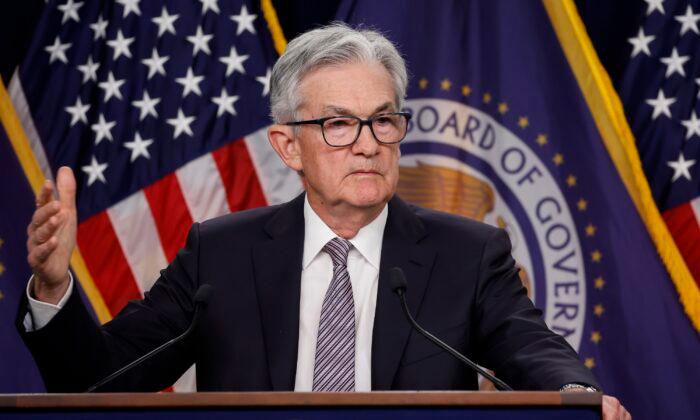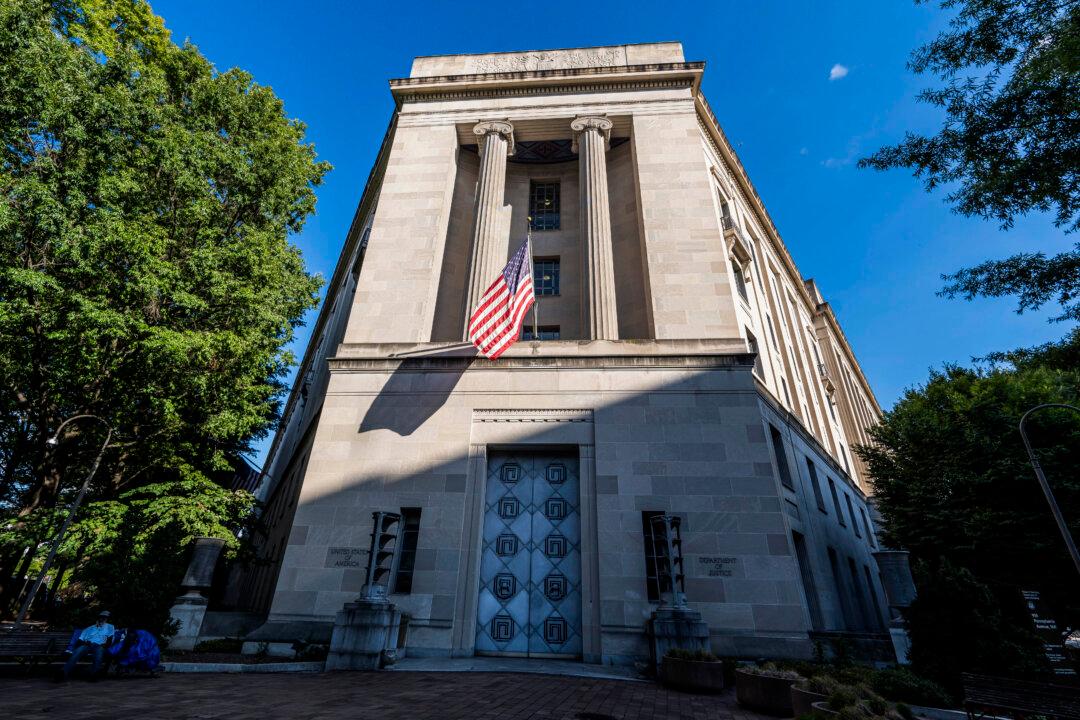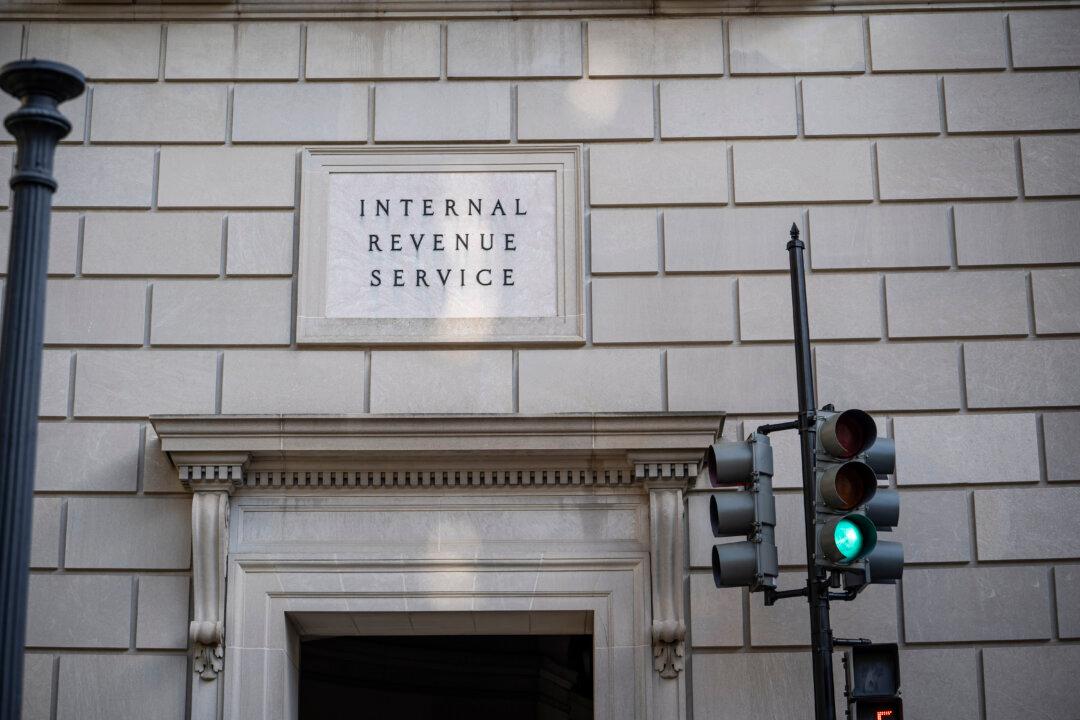The latest inflation numbers are a mixed bag, accelerating sharply in monthly terms though easing a little in annual terms, with experts largely saying that the data remains too hot for the Federal Reserve (Fed) to start dropping interest rates. However, a pause in the rate-hiking cycle could be in the cards.
The month-over-month pace of inflation rose fourfold from 0.1 percent in March to 0.4 percent in April, and underlying inflation remained strong, with a number of experts saying that the data points to the Fed keeping interest rates high for longer—or even raising them further.
“Markets have been betting hard on there being a pause in interest rate rises over the summer months, but the Federal Reserve continues to hold that door open for more rises,” said Tom Hopkins, portfolio manager at BRI Wealth Management in London.
Fed Pause Incoming?
Investors are betting that the Fed will hold rates steady within the current range of 500–525 basis points when the Federal Open Market Committee (FOMC) meets in mid-June to decide on the path of the benchmark federal funds rate.“Overall, the print would seem to give the Fed room to keep its foot on the brakes at its next meeting in June,” said Carol Schleif, chief investment officer at BMO Family Office in Minnesota.
Around 13 percent of investors think the Fed will deliver another quarter-point hike at the June 14 meeting, per the CME tool.
“I don’t necessarily think it’s a blazing bullish report, but it’s going to give some people the option to argue for a pause and a pivot from the Fed, which I don’t think is the case,” said Kenny Polcari, chief market strategist at Slatestone Wealth in Florida.
“I think the Fed will raise rates again in June and then pause. I don’t see a pivot in all of 2023,” Polcari added, with a ”pivot” being a reference to dropping rates.
“We think that [the Fed is] done hiking rates,” said Luke Tilley, chief economist at Wilmington Trust in Delaware.
Fed’s Powell Says More Hikes Could Be In Store
Federal Reserve Chair Jerome Powell hinted during a May 3 press conference following the central bank’s decision to raise rates by 25 basis points that the latest hike could be the last.“You will have noticed that, in the [FOMC] statement from March, we had a sentence that said the Committee anticipates that some additional policy firming may be appropriate,” Powell said. “That sentence is not in the statement anymore,” he added, suggesting that policymakers see the case for further rate hikes getting weaker.
Part of what’s behind speculation that the Fed might hit pause is the fact that the economic headwinds from tighter credit conditions after a year of rate hikes have been exacerbated by strains in the banking sector that emerged after the collapse of Silicon Valley Bank.
“In light of those uncertain headwinds, along with the monetary policy restraint we have put in place, our future policy actions will depend on how events unfold,” Powell said, noting that the emerging credit squeeze is likely to weigh on economic activity, hiring, and inflation.
At the same time, Powell left open the door to further rate increases if incoming inflation data proves hotter than expected.
Markets React
Market reaction to Wednesday’s inflation data was mixed, with the DXY dollar index initially seeing a sharp drop in line with expectations for lower interest rates, before clawing back much of the losses. Stocks were mixed, with the S&P 500 up by 0.11 percent, the Dow Jones down 0.45 percent, and the Nasdaq up 0.66 percent, as of 12:30 p.m. ET.Wednesday’s inflation data “came in actually as expected, but I think there may have been people looking for a stronger number. So that’s why we had a decent reaction” in markets, said Priya Misra, head of global rates strategy at TD Securities in New York.
“The market might be rejoicing here that inflation is on the way down, it is, but we think it’s going to be a little bit sticky on the way down,” Misra added, referring to the idea that inflation would defy predictions for a quick return to around the Fed’s 2 percent target.
Looking ahead to future data points on inflation, the April producer price index (PPI) is set for publication on May 11. The PPI inflation data reflects prices paid by producers for various inputs, which tend to be a forward-looking indicator of the future pace of inflation as higher business costs tend to eventually get passed on to consumers.
Current market forecasts for PPI predict that, much like Wednesday’s consumer inflation data, the monthly numbers will show accelerating prices while the annual figures will show a slowdown.
The month-over-month pace of input price growth is expected to come in at 0.3 percent in April, up sharply from a 0.5 percent decline in March. The year-over-year PPI rate forecast sees a 2.4 percent rate of growth in April compared to 2.7 percent in March.
Fed officials will have an additional release of consumer price index (CPI) data to consider before the FOMC’s next meeting on June 14.
“While Federal Reserve officials might be inclined to stand pat on interest rates at this point, they still have a month’s worth of data still to digest before the scheduled June FOMC meeting, including another CPI release,” Mark Hamrick, senior economic analyst at Bankrate, told The Epoch Times in an emailed statement.
A recent survey from Bankrate showed that the Fed’s fight to quash inflation had led Americans to report sharply higher levels of financial anxiety compared to before the central bank set out on its fastest pace of rate hikes since the 1980s.
“As the Fed has prioritized the battle against inflation through interest rate hikes since last March, high and sustained price gains have taken a toll on Americans both financially and on their mental health,” Hamrick said.
“The degree to which the war of inflation will be, or is being won, the better for individuals and households,” Hamrick said.





